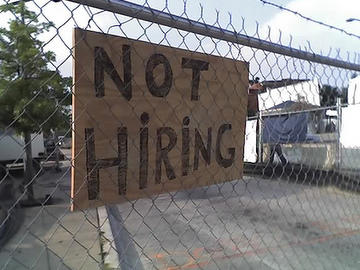
Section Branding
Header Content
Medicaid, PeachCare Enrollment Grows As Pandemic Continues
Primary Content

Georgia’s Medicaid and PeachCare rolls continue to grow amid the economic devastation from COVID-19.
Newly released June enrollment figures show that Medicaid membership grew by 23,000, while PeachCare, the children’s health insurance program in Georgia, saw enrollment rise by nearly 14,000.
That continues a steady increase in each program, though April’s Medicaid growth was much higher.
Many people have lost jobs and income since the COVID-19 crisis occurred. That, in turn, often leads to a loss of employer-based health insurance. During such tough times, more individuals and their family members wind up enrolled in Medicaid, the federal/state program for the poor and the disabled.
Nearly 2 million Georgians are currently members of Medicaid and PeachCare – and most of them are children.
The enrollment increases almost certainly will have an impact on the state budget.
The financial impact on states’ Medicaid programs from higher enrollment was cushioned when early in the COVID pandemic, Congress enacted a temporary 6.2% boost in the federal Medicaid matching funds rate.
The legislation conditioned the higher federal rate on states maintaining pre-COVID Medicaid eligibility standards. The increase and coverage protections will expire when the emergency declaration is lifted.

States that have expanded their Medicaid programs under the Affordable Care Act are expected to have even bigger increases in enrollees amid the pandemic, because they allow more coverage for low-income adults. Georgia is one of 14 states that have not expanded the program, with the state’s Republican-led government saying the move would be too expensive.
With all the job losses amid the pandemic, Georgia is likely to see a big jump in the number of people who have no health insurance of any kind.
A recent analysis, in fact, estimates that 178,000 Georgians have lost coverage during the pandemic.
The study by consumer advocacy group Families USA found that the estimated increase in uninsured workers nationally from February to May was nearly 40% higher than the highest previous increase, which occurred during the recession of 2008 and 2009, when 3.9 million adults lost insurance.
“We knew these numbers would be big,” said Stan Dorn, who directs the group’s National Center for Coverage Innovation and wrote the study. “This is the worst economic downturn since World War II. It dwarfs the Great Recession. So it’s not surprising that we would also see the worst increase in the uninsured.”
Nearly half of the increases in the uninsured resulting from the COVID-19 pandemic and resulting economic crash, the study said, have occurred in five states: California, Texas, Florida, New York, and North Carolina.
In eight states, 20% or more of adults are now uninsured: Texas (29%); Florida (25%); Oklahoma (24%); Georgia (23%); Mississippi (22%); Nevada (21%); North Carolina (20%); and South Carolina (20%).
Of the eight states, all but Oklahoma were among the 15 states with the country’s highest spike in new COVID-19 cases during the week ending July 12, the Families USA study said.
This story comes to GPB through a reporting partnership with Georgia Health News

